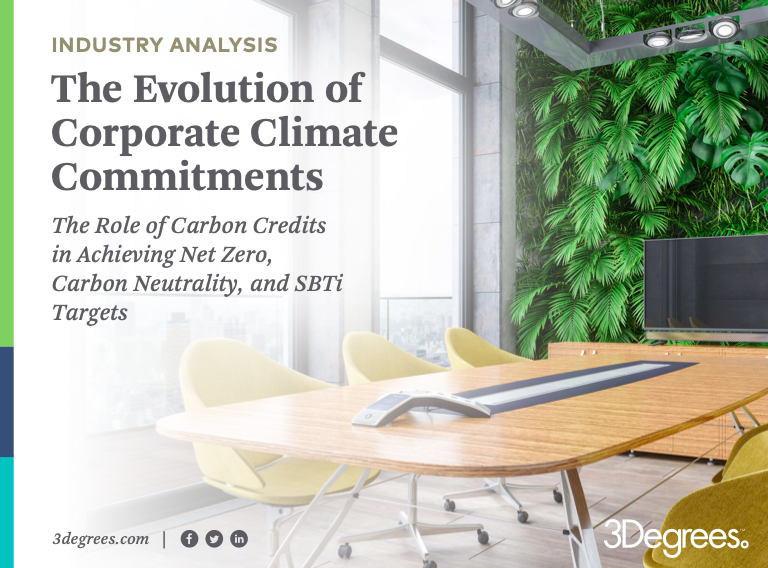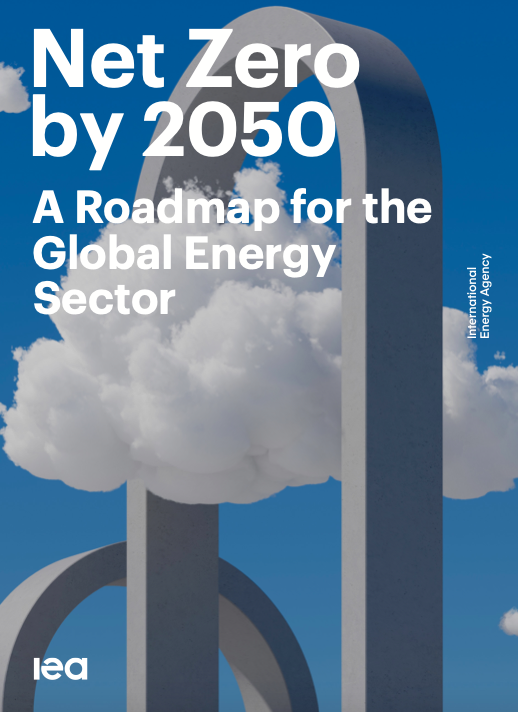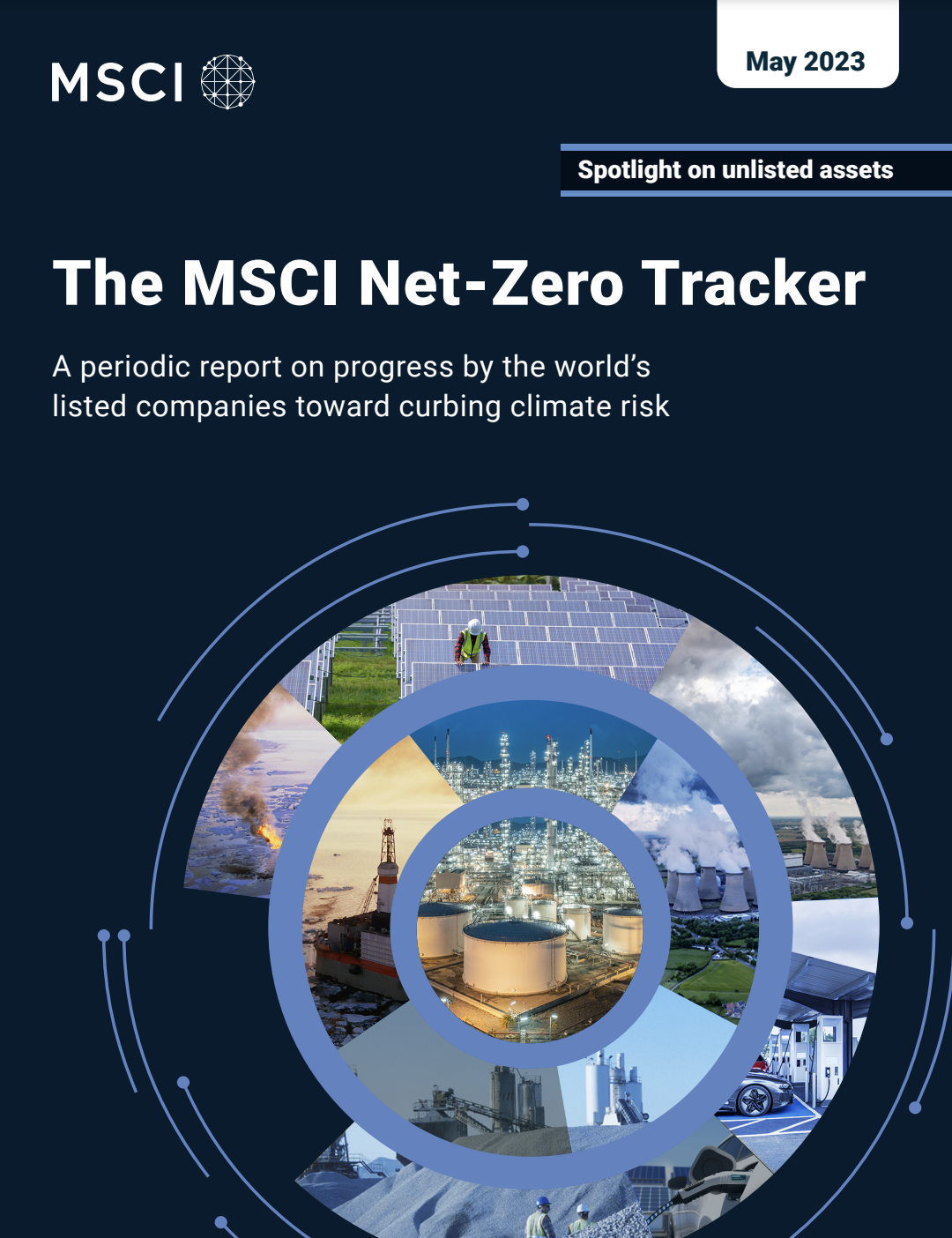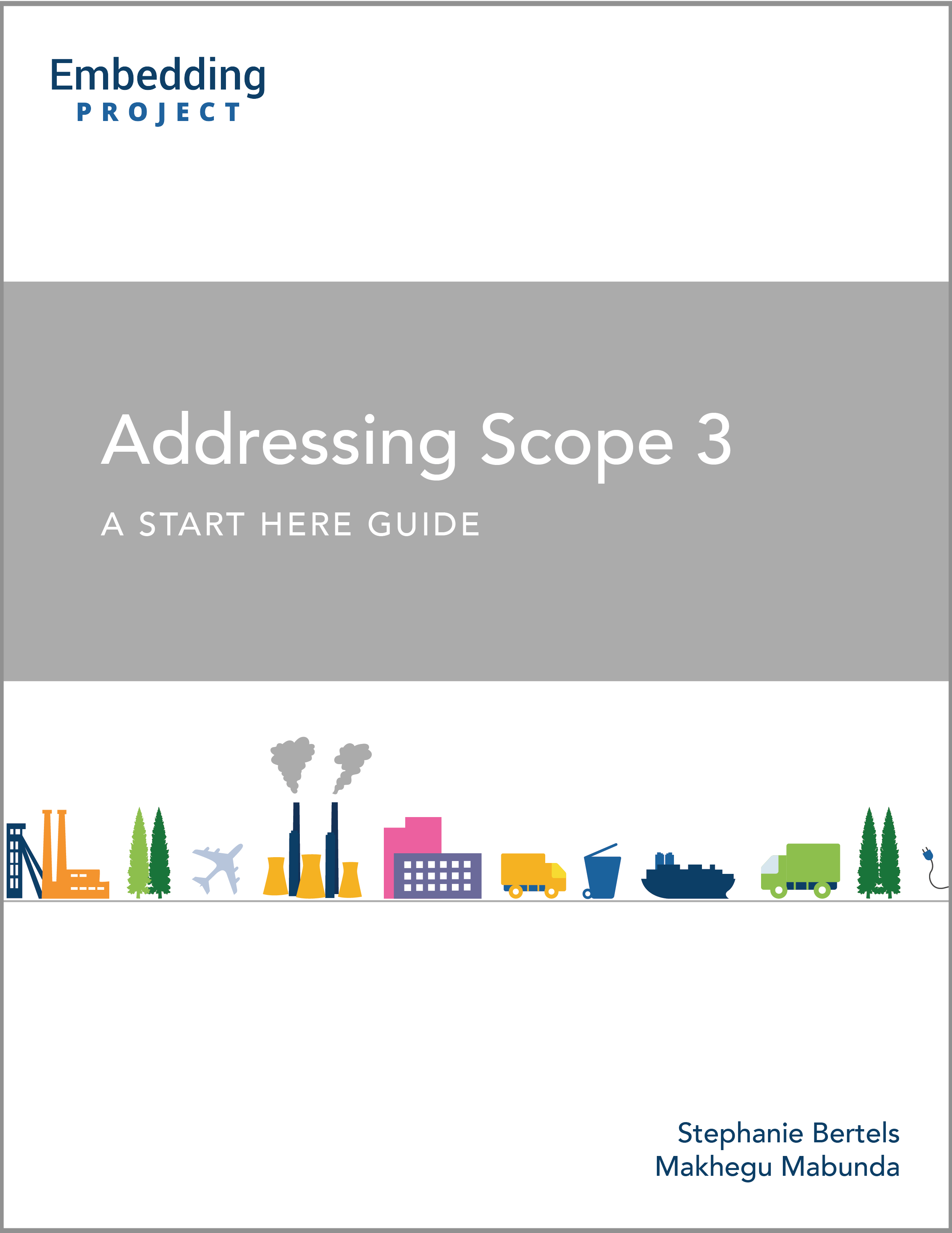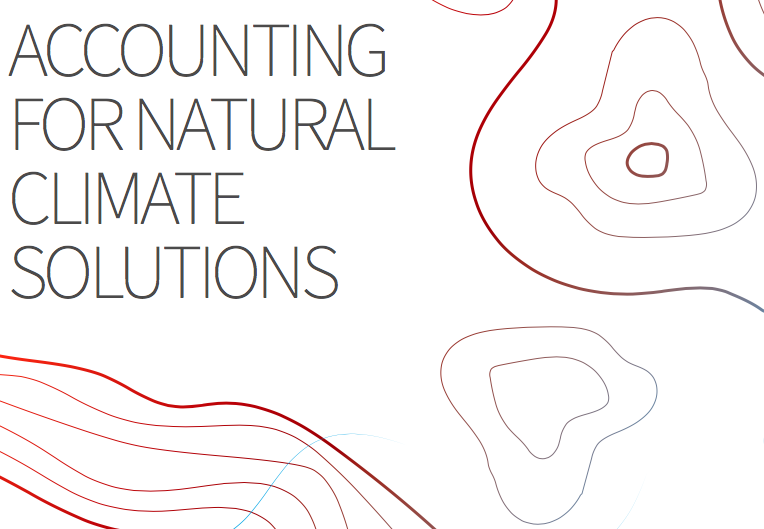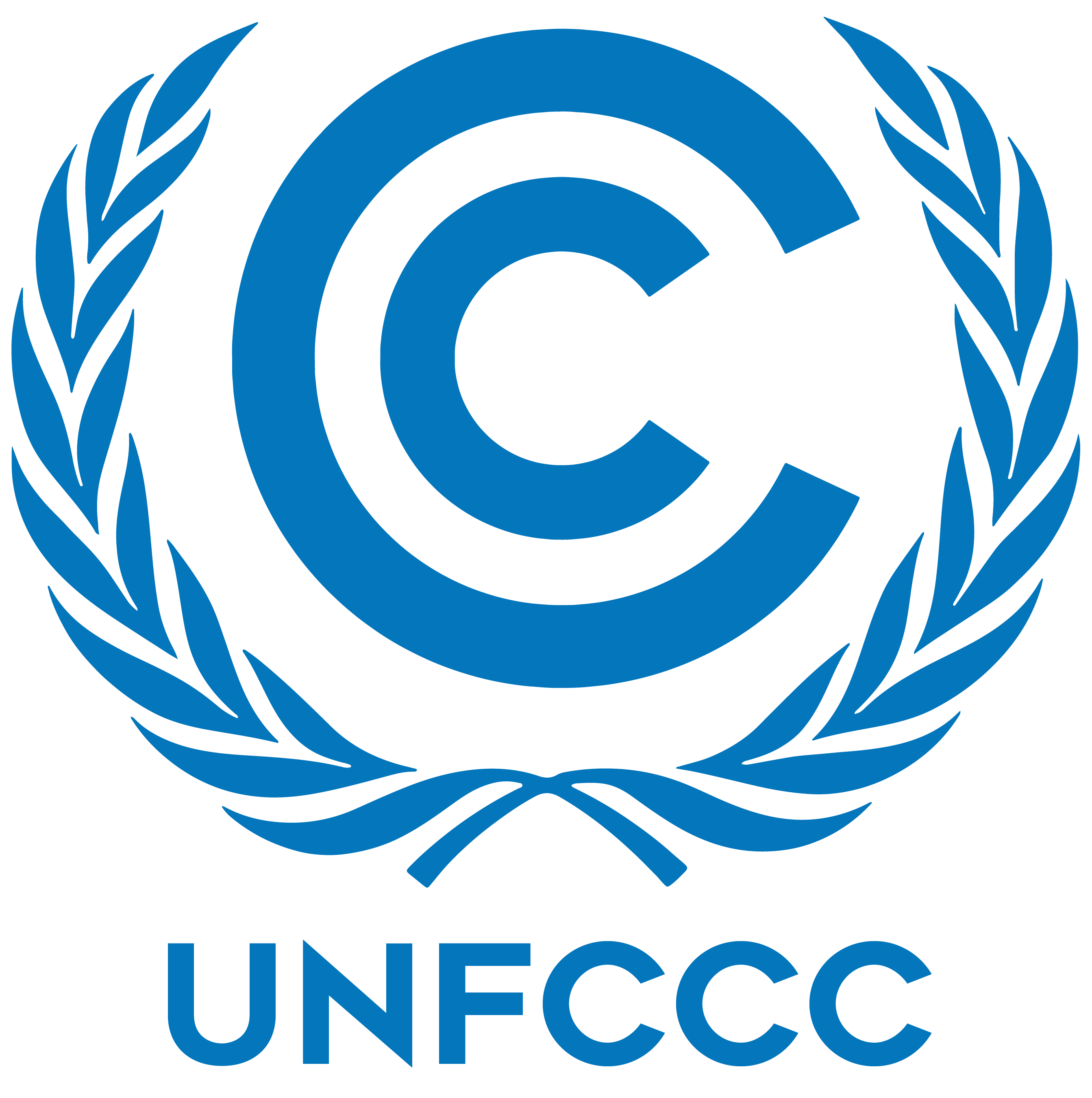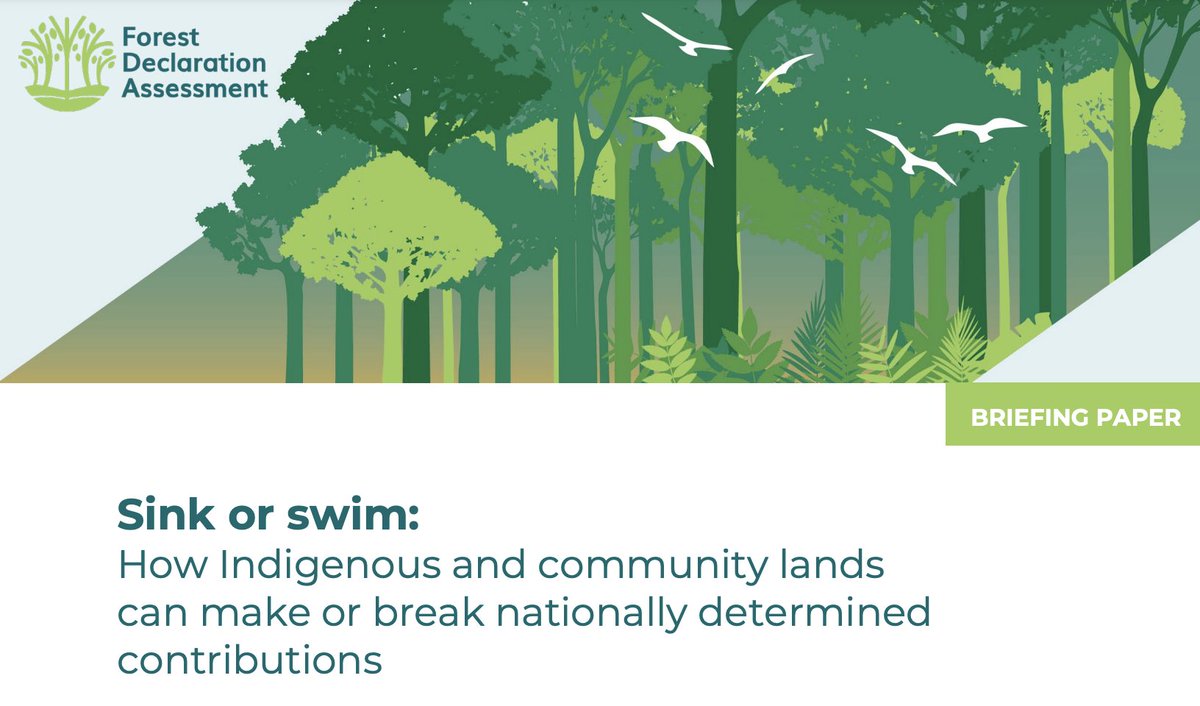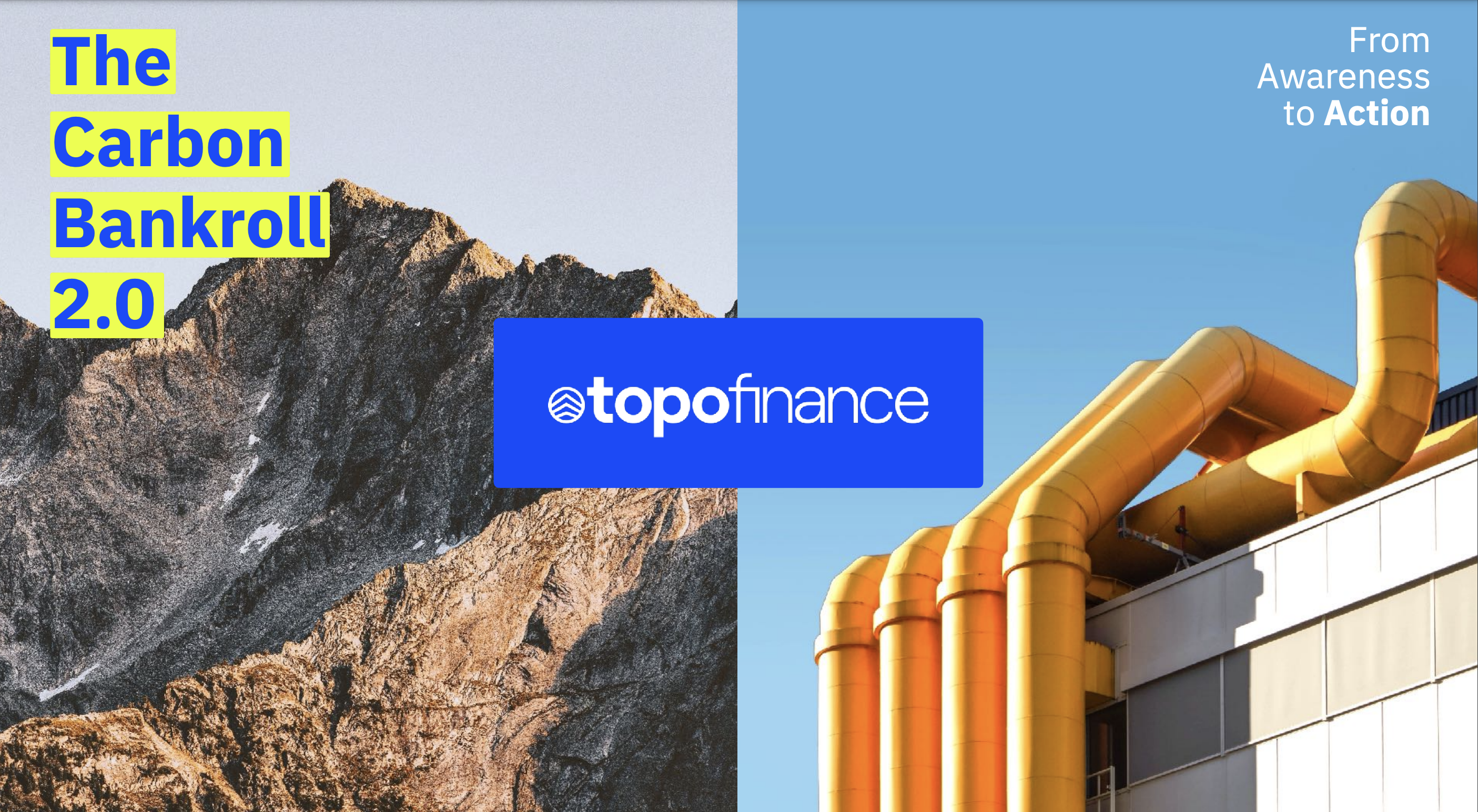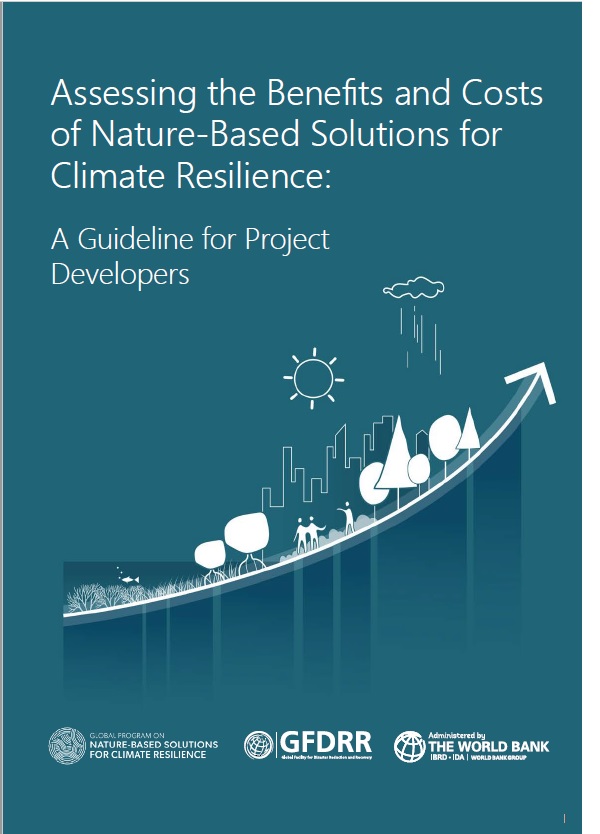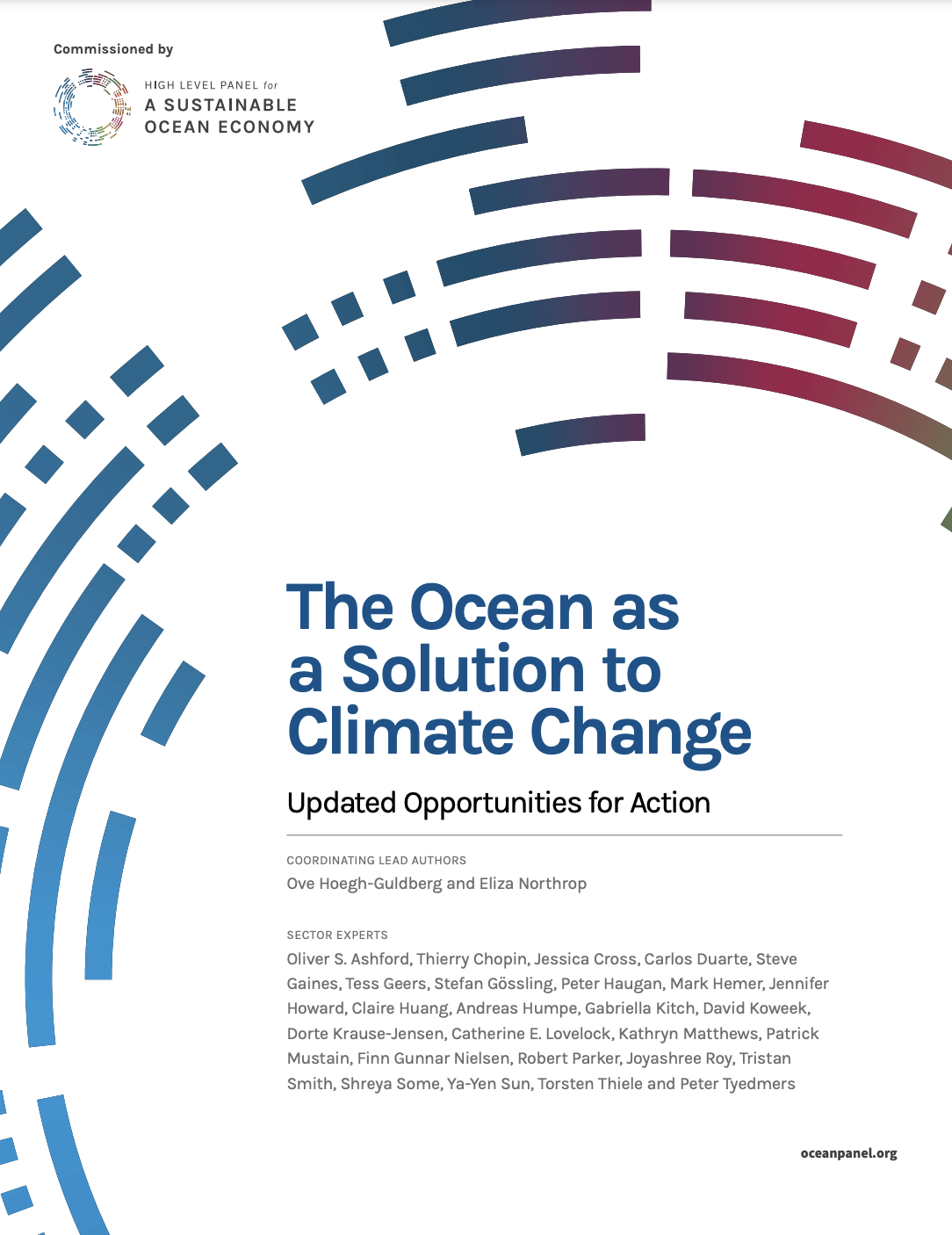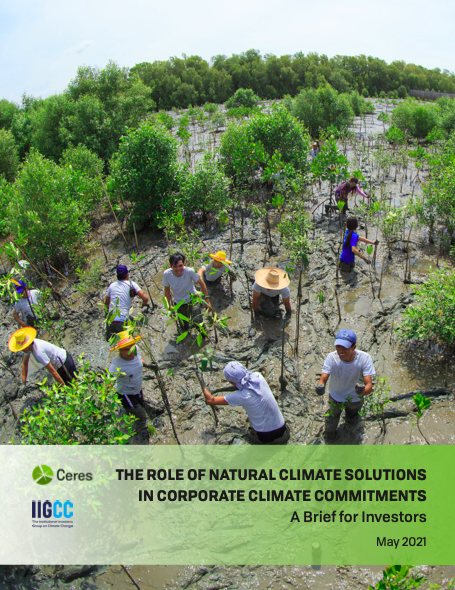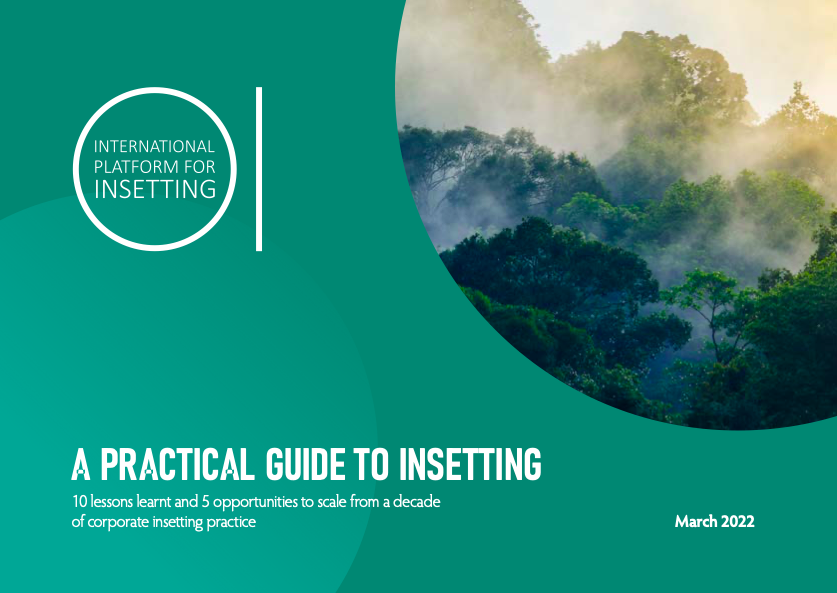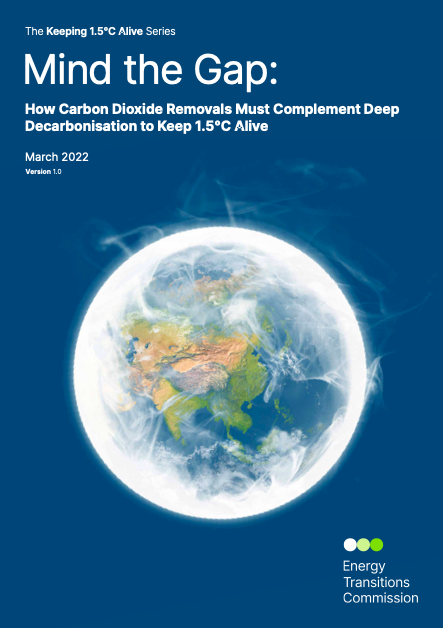Climate Mitigation
Description
Including efforts to reduce or prevent emission of greenhouse gases.
Share this Subissue on:LinkedIn
Resources
Setting Targets and Commitments
Science Based Targets
Building on the momentum of the Science Based Targets initiative (SBTi), the Science Based Targets Network (SBTN) is a collaboration of 45+ global non-profits and mission-driven organizations working together to develop guidance to set science-based targets for all of Earth’s systems. Science Based Targets has created a five-step target-setting framework that helps you to assess; interpret and prioritise; measure, set, and disclose; act upon; and track your science-based goals. They have also created sector-specific guidance and target monitoring for companies and financial institutions.
At present, Science Based Targets helps companies to develop their goals based on the latest science: SBTi specifically focuses on GHG emission reduction goals, and SBTN specifically focuses on nature positive goals, with target-setting guidance for land, biodiversity, and freshwater. Their respective websites provide comprehensive resources, cases, and support for taking credible action.
Greenhouse Gas Protocol
This is the global standard for measuring GHG emissions. The protocol was developed by the World Resources Institute (WRI) and World Business Council on Sustainable Development (WBCSD) and includes sector specific guidance and calculation tools.
The Net-Zero Standard
The Science Based Targets initiative’s (SBTi) Corporate Net-Zero Standard includes the guidance, criteria, and recommendations companies need to set science-based net-zero targets consistent with limiting global temperature rise to 1.5°C. The framework consists of four parts: 1) setting near-term interim science-based targets for rapid, deep emissions cuts, 2) setting long-term science-based targets that align with reaching net-zero at the global or sector level by 2050 or sooner, 3) neutralizing residual emissions, and 4) taking action to mitigate emissions beyond the value chain. This resource also includes specific sector guidance for setting science based targets, as well as guidance for updating and communicating targets. It should be noted that SBTi has reduced their restrictions related to acceptable carbon removal practices, including offsetting, but the document highlights that only the final 5-10% of emissions may be neutralized this way in order to qualify as net-zero.
A Standard for Net Zero
A wave of companies are committing to “net zero," but what does being a net zero business mean in practice? The Science Based Targets initiative has released their definition and framework for reaching net zero, and it includes allowances for up to 10% of a company's emissions profile to be removed as offsets. If you are looking for clear and appropriate criteria for "net zero" best practices that will advance you beyond this, this resource from Watershed explains how net zero differentiates from "carbon neutral" and will help you to understand the actions that are required for your company to become a genuine "net zero company."
The Evolution of Corporate Climate Commitments: The Role of Carbon Credits in Achieving Net Zero, Carbon Neutrality, and SBTi Targets
New and increasingly sophisticated carbon reduction targets have emerged as organizations look to aggressively reduce their emissions. This resource from 3Degrees will help you to understand the difference between three increasingly commonly climate-related targets: carbon neutrality, science-based targets, and net zero emissions. The guide also highlights solutions for addressing unabated or residual emissions.
The World Roadmap to Net Zero by 2050
The IEA's World Roadmap to Net Zero by 2050 is essential reading for businesses directly and indirectly involved in the energy industry. This guidance will help you to understand what is needed from companies, governments, investors, and citizens to fully decarbonise the energy sector and set emissions in line with the 1.5° C target. The guide outlines what a cost-effective and economically productive pathway could look like, and explores key uncertainties, such as the roles that bioenergy, carbon capture, and behavioural changes will play in reaching net zero.
Integrity Matters: Net zero commitments by non-state entities – A briefing for board directors
This UN report sets out five key principles and ten key recommendations that can help board members to develop and implement credible and comprehensive net-zero commitments. This resource provides a holistic set of meaningful actions that companies can take, as well as key questions directors should ask.
Engaging Supply Chains on the Decarbonization Journey: A Guide to Developing and Achieving Scope 3 Supplier Engagement Targets
This guide by the Science Based Targets initiative (SBTi) will help address your value chain sustainability impacts by setting supplier engagement targets. It explains how to select suppliers, set and implement targets, and track progress. The guidance will be most useful to sustainability and supply chain management teams that are exploring or already working to reduce their organization’s Scope 3 emissions.
Atmospheric Carbon Dioxide Tagged by Source
This visualisation from NASA shows atmospheric carbon emissions and sequestration across the globe over a one year period. It includes emission sources from fossil fuel combustion, biomass burning, land ecosystems, and the ocean. It also shows the areas of land and ocean that are sequestering carbon. This resource provides compelling visuals that can be shared with business leaders and anyone else who would benefit from better understanding the scale of our human impact on the carbon cycle.
Achieving global climate goals by 2050: Pathways to a 1.5° C Future
This report from the ClimateWorks Foundation can help you better understand the distribution and scale of climate mitigation opportunities. Based on scenario modelling, it highlights priority areas across eight geographies and eleven sectors. This resource will be most useful to sustainability practitioners and business leaders interested in the broader context of the transition to net-zero by 2050.
The MSCI Net-Zero Tracker
This periodic report from MSCI can help you understand the progress of large companies on mitigating climate risk. It monitors listed companies around the world and their alignment with the 1.5 °C warming threshold. It highlights leaders and laggards on corporate climate disclosures, and includes a review of both financed emissions and the economic opportunities associated with the climate transition, such as clean tech and climate investment. These insights will be most useful to sustainability practitioners seeking to benchmark their performance, highlight opportunities, and point out the remaining ambition gap in their organisation.
Climate Action 100+ Resource Hub
This resource hub from InfluenceMap’s Climate Action 100+ (CA100+) initiative can help you better understand corporate climate policy engagement. The site features a series of tools that show which organisations are contributing to - or hindering - climate policy. These include the CA100+ Company Rankings and Industry Association Rankings, with rankings determined by alignment with the Paris Agreement; Corporate Disclosure scorecards, which assesses the accuracy and credibility of corporate sustainability reporting; and Shareholder Resolutions, featuring real world investor briefings created by InfluenceMap to support shareholder voting decisions on corporate climate policy.
This set of tools was designed for investors, but they will be useful to anyone interested in benchmarking and ensuring consistency between their business’ commitments and actions on climate change.
Taking Action to Reduce Emissions
Addressing Scope 3: A Start Here Guide
A guide for leaders of companies of all sizes to understand the basics of Scope 3 emissions and how companies should begin to take credible action. The guidance is anchored in the real-world experience of companies that are already navigating this journey.
Degree of Urgency: Accelerating Actions to Keep 1.5°C on the Table
This report from the Energy Transitions Commissions (ETC) assesses progress since COP26 and outlines the priority areas for accelerated action at - and beyond - COP27. The report provides a good summary of the achievements of COP26, the status of our climate budget, the credibility and quality of global climate-related commitments, and the steps required to close the 'gap' in climate-related ambition, implementation, and financing within both sectors and countries. This resource is a good starting point for executives, boards, and junior sustainability change agents that want to get up to speed on the priority areas for accelerated progress on climate action.
Accounting for Natural Climate Solutions Guidance
Natural climate solutions have been recognised as key levers in mitigating the negative impacts of climate change, with ~12% of global impacts from GHG emissions coming from land use and land-use changes (LULUC). To support you in calculating, accounting for, and reporting on LULUC-generated GHG emissions, the Accounting for Natural Climate Solutions Guidance from Quantis delivers a robust methodology to embed land-related emissions in corporate and product footprints, which can be used for setting science-based climate targets. Additionally, the supporting Annex document provides detailed information on the scope of the proposed methodology, including technical instructions, context, debated challenges, and limitations, as well as references.
Climate Action Pathways
First launched in 2019 by the UN's Framework Convention on Climate Change, the Climate Action Pathways set out sectoral visions for achieving a 1.5° C resilient world in 2050. Pathways are a living document, and will provide you with an up-to-date road map of the interim actions and key impacts needed by 2021, 2025, 2030 and 2040 to achieve the 2050 vision.
The Pathways are divided into executive summaries and action tables that cover thematic areas linked to climate change, such as energy, industry, land use, transport, and water, as well as cross-cutting themes like resilience. The summaries provide a vision of the future, summarising the needs - and milestones - for system transformation and progress to date, whereas the action tables highlight specific time-bound actions that businesses (and other relevant stakeholders) can take to deliver on 2050 vision.
Sink or swim: How Indigenous and community lands can make or break nationally determined contributions
This paper, authored by researchers from World Resources Institute and Climate Focus, examines the role of Indigenous peoples and local communities' (IPLC) lands as carbon sinks and the impact they can have in support of nationally determined contributions (NDCs) towards reducing global emissions. It explains the contributions of IPLC lands to reducing climate change; their current role in countries' current NDCs; key policy and governance gaps to achieving greater mitigation potential from IPLC lands; and recommendations for governments and international donors. This paper can help you to better understand the positive impact you can have in reducing emissions by supporting national projects that protect and grow IPLC lands.
Climate Solutions at Work
This guide from Drawdown Labs was created to "democratize" climate action by helping all employees concerned about climate change to take concrete action in the workplace. It identifies ways for employees to assess whether or not their company is taking adequate steps to address climate change; examines job functions that have untapped potential for driving action; explains how one can work with their colleagues to amplify and hasten impact; and uses the Drawdown-Aligned Business Framework to highlight key leverage points and specific actions that all business must utilize and deliver upon. This is a good introduction for any employee who is interested in and motivated to support climate action, but whose title and accountabilities may not be immediately and obviously relevant.
The Carbon Bankroll 2.0: From Awareness to Action
Building on the groundbreaking Carbon Bankroll 1.0 report, this report from Topo Finance explores the substantial climate impact of companies' banking and investment practices. It explains how - for many large businesses - corporate cash and investments are generating more emissions than all operations and supply chain activities combined; illuminates the central role that banking plays in determining our climate future; and provides valuable insights and step-by-step guidance for turning this awareness into action.
8 Steps to Enhance GHG Reporting: A Roadmap for Finance and Accounting Professionals
This guide by the International Federation of Accountant (IFAC) and We Mean Business Coalitions (WMBC) can help ensure your organisation’s GHG accounting is timely, robust, and reliable. It covers eight practical steps your CFO and finance team can take to collect, manage, and disclose GHG data according to the latest international standards.
Guidance on Avoided Emissions: Helping business drive innovations and scale solutions towards Net Zero
There is a growing recognition of the need to scale climate solutions (e.g., products, services, technologies) in order to produce necessary system-wide change. In response, private sector sustainability claims are surging. Unfortunately, many of these claims are not credible. The World Business Council for Sustainable Development (WBCSD) and a host of multi-stakeholder collaborators have created this guide to help you to credibly account for avoided GHG emission stemming from your climate change-related solutions. The guide outlines a rigorous methodology for assessing these avoided emissions so that strategic decisions related to climate investments are better informed. It covers five areas: defining avoided emissions; leveraging avoided emissions; ensuring the contribution is legitimate; assessing avoided emissions; and reporting avoided emissions. These insights will be most useful to sustainability professionals, but will also have implications for other departments including finance, development, and communications.
Assessing the Benefits and Costs of Nature-Based Solutions for Climate Resilience: A Guideline for Project Developers
This report from the World Bank aims to help you make the case for investments in Nature-Based Solutions (NBS) for climate resilience. It provides a decision framework to cost-effectively quantify the benefits and costs of NBS. The frameworks includes a common set of six analytical steps and four guiding principles to help you value the benefits of NBS related to disaster risk, food production, tourism, recreation, biodiversity, health, and water quality. It also provides eight case studies to illustrate how these assessments works in practice. The framework will be useful to a number of departments that may be involved in developing NBS projects including sustainability, finance, strategy, R&D, and operations.
The Climate Drive
This platform by WBCSD features a number of tools that can support your organisation’s net zero transition. These include an Action Library that features tangible, high-impact actions and recommendations from peers, such as green energy options for your operations and ways to make use of Power Purchasing Agreements. There is also an online Readiness Check that helps you assess your current goals, policies, and practices relating to decarbonisation, and a Net Zero Guidebook designed to help you build and leverage your net zero knowledge. This set of practical resources will be most useful to sustainability teams coordinating decarbonisation plans and to the operations departments seeking decarbonisation solutions to implement.
The Ocean as a Solution to Climate Change: Updated Opportunities for Action
This detailed report, produced by the High Level Panel for a Sustainable Ocean Economy (Ocean Panel), can help change agents understand the range of available and scalable ocean-based climate solutions. It highlights current and emerging opportunities to reduce greenhouse gas emissions in ocean-based sectors, including ocean-based renewable energy, food, carbon capture and storage, and more. It also outlines how the technology and infrastructure needed to implement these solutions can be financed within the unique context of each ocean-based sector.
Carbon pricing: Seven things to consider when establishing a carbon pricing program
This article is useful for organisations establishing a carbon pricing program. It answers specific, common questions and provides practical advice that will help you to align your carbon pricing program with the motivations, goals, structure, and culture of your organisation.
The Low Carbon Lifestyles Wheel: Behaviors, Barriers, and Benefits
This paper from Futerra, BEworks, and WBCSD can help you promote the adoption of lower-carbon lifestyles. It is based on an “Action Wheel” framework that presents four categories of individual-level action: transportation, housing, diet, and purchases. Each category is broken down into outcomes, such as “Live car-free” or “Local Food”. Each of these outcomes is then further divided into specific actions. The paper also provides guidance on addressing the many potential barriers to each action. This practical tool will be useful to anyone seeking to foster sustainability-related behaviour change among employees.
Blue Ambition Loop: Achieving Ambitious 2030 Ocean-Climate Action
This brief produced by the UN High-Level Climate Champions group can help raise your awareness of ocean-based climate solutions and the role of businesses and other non-state actors in applying them. It provides a snapshot of commitments and actions being taken on six topics: ocean ecosystems conservation, marine transport, ocean energy, ocean food, ocean tourism, and ocean finance. This resource will be most useful to sustainability and supply chain practitioners.
Offsetting, Insetting, and Carbon Markets
The Role of Natural Climate Solutions in Corporate Climate Commitments: A Brief for Investors
Nature-based carbon offsets - also known as natural climate solutions (NCS) - can be an effective part of a company's mitigation efforts. However, it can be difficult to know where to begin, or how to exercise due diligence to ensure that the solutions you support are credible. This brief provides introductory guidance for institutional investors on the use of NCS in corporate climate strategies. It can help you to better understand the role of natural NCS for pursuing net-zero emissions, and how to better evaluate the quality of nature-based carbon credits.
The Core Carbon Principles
The Core Carbon Principles (CCPs) are a global benchmark that provide a credible and rigorous means of identifying high-integrity carbon credits. The CCPs were created by the Integrity Council for the Voluntary Carbon Market (ICVCM) to help standardise the quality of carbon credits sold on the voluntary market, and were developed through global cooperation from hundreds of key stakeholders and organisations throughout the voluntary carbon market. These 10 principles can help your company to better assess the quality of carbon credits and to ensure that your purchases are having real and verifiable impact on the climate.
The ICVCM has also created a guidebook that features a summary for decision-makers, which presents their assessment framework; their recommended assessment procedure; and an overview of the CCPs and their implementation through the assessment framework.
Oxford Principles for Net Zero Aligned Carbon Offsetting (revised 2024)
The Oxford Principles can help improve the emissions reduction outcomes of your carbon offsetting strategy. The Principles focus on four main elements for credible net-zero aligned offsetting:
Cut emissions, ensure the environmental integrity of credits used to achieve net zero, and regularly revise your offsetting strategy as best practice evolves
Transition to carbon removal offsetting for any residual emissions by the global net zero target date
Shift to removals with durable storage (low risk of reversal) to compensate any residual emissions by the net zero target date
Support the development of innovative and integrated approaches to achieving net zero
It also defines key terms and targets and explains types of projects available in today's carbon markets.
Reforming the voluntary carbon market
This white paper from Compensate is a good starting point for better understanding the voluntary carbon market and the steps required to achieve greater impact with carbon capture projects. It explains the current state of the market and highlights the most common flaws in carbon capture projects. It also introduces Compensate's project evaluation criteria, and explains how to apply it in practice.
A Practical Guide to Insetting
Insetting refers to a company offsetting its emissions through projects that avoid, reduce, or sequester carbon within its own value chain. It is an opportunity for businesses to link emissions and carbon sequestration to their sourcing landscapes. This guide from the International Platform for Insetting shares insights and provides recommendations that will help you to transform your supply chain for a resilient, regenerative, net zero carbon future that values and protects nature. The guide was created specifically for insetting practitioners and stakeholders that want to learn more about the concept, and it highlights lessons and opportunities for realising the full potential of insetting.
A buyer's guide to high-accountability MRV
Carbon180 has created a simple matrix to highlight the difference between high-accountability and low-accountability actions related to measuring, monitoring, reporting, and verifying (MMRV) the results of carbon removal projects. This is a good starting point for senior leaders that are exploring carbon offsetting as part of their organisation's mitigation strategy and want to build accountability and trust with carbon removal project developers.
A Buyer's Guide to Natural Climate Solutions Carbon Credits
This guide produced by the Natural Climate Solutions Alliance, WBCSD, and BCG is designed to help companies select and procure high-quality carbon credits on the voluntary carbon market. It focuses specifically on natural climate solution (NCS) credits, which are intended to support carbon reduction while also providing co-benefits for communities and biodiversity. Going step-by-step, the guide outlines how to integrate NCS carbon credits into your climate strategy. This includes setting procurement criteria, finding sources, purchasing, and reporting credible claims. The guidance will be most useful to sustainability and procurement teams.
How to Kick-Start the Carbon Removal Market: Shopify’s Playbook
Shopify spent the past year exploring and growing the carbon removal market, and they created this playbook to share their journey and learning outcomes. This guide provides experiential insights, tangible steps, tools, and templates that will help you to fund the right types of climate solutions; be flexible with purchases to maximise impact; and identify the most promising carbon removal companies. If your company wants to contribute to a net zero future through carbon removal but is leery of costly mistakes, we recommend this as early essential reading.
Claims Code of Practice: Building integrity in voluntary carbon markets
Recent questions about the credibility of voluntary carbon credits threatens their potential to fill financing gaps for climate mitigation. In response, the Voluntary Carbon Markets Integrity initiative (VCMI) has worked with existing standard-setters to create a code of practice that brings clarity to what a high quality credit looks like.
The Claims Code can help businesses make credible use of carbon credits in their climate commitments. The Code provides a practical, detailed, 4-step process: 1) Comply with the Foundational Criteria, 2) select a VCMI Claim to make, 3) meet the required carbon credit use and quality thresholds, and 4) obtain third-party assurance following the VCMI Monitoring, Reporting & Assurance (MRA) Framework. The guidance will be most useful to sustainability teams or anyone involved in purchasing credits from the voluntary carbon markets.
Carbon removal and avoidance: a buyer’s guide
This concise guide from Watershed (a carbon credit marketplace) can help you to identify credits that have meaningful impact. It begins by explaining the nuanced yet important difference between carbon avoidance and carbon removal. It then outlines the key features of high-quality avoidance projects, and describes two main categories of carbon removal: “nature-based solutions” and “permanent carbon removal solutions." This guide may be useful as a quick introduction to offsetting for sustainability and finance departments that are looking to purchase offsets of the first time.
How to choose carbon offsets that actually cut emissions
This article from MIT Sloan will help you to understand whether or not the carbon offsets you purchase are actually cutting emissions. It outlines a simple four point framework that assesses if the offset is Additional, Verifiable, Immediate, and Durable (AVID+). Each point must be met for an offset to be credible. When these minimum requirements are met, offset purchasers should also look for projects with additional societal benefits (the “plus” of AVID+). This framework will be most useful to sustainability teams and anyone else involved in purchasing carbon offsets.
Insetting and Scope 3 climate action: applying and accounting for Natural Climate Solutions (NCS) in land sector value chains
This brief from WBCSD can help you to better understand the emerging practice of insetting is and why it is especially important in land sector value chains. The paper defines insetting; outlines how the GHG Protocol’s draft guidance is accounting for insets; and describes the business case for insetting and the need to harmonise insetting definitions and accounting. The guidance will be most useful to sustainability practitioners and supply chain managers working in agriculture and forestry, or in other industries with significant land use.
Mind the Gap: How Carbon Dioxide Removals Must Complement Deep Decarbonisation to Keep 1.5°C Alive
This briefing paper from the Energy Transitions Commision (ETC) will help you to understand that carbon removals must play a role in climate change mitigation strategies in addition to rapid decarbonisation, starting today.
The paper provides a comprehensive description of how ambitious development of cardon dioxide removal (CDR) solutions - combined with ambitious decarbonisation - could prevent 'overshoot' of the 1.5°C carbon budget by 2050. It covers climate targets and the implications for carbon budgets; emissions reduction scenarios and the size of the overshoot gap; types of CDR and their feasible scale by 2050; the risks involved for each type of CDR and how to manage them; an examination of who should pay for removals, and how; and the actions needed in the 2020s to ensure subsequent removals occur at the necessary pace and scale.
Mapped: The impacts of carbon-offset projects around the world
This tool created by Carbon Brief maps out the locations of carbon offset projects that have created negative impacts. It can help you to understand how these negative impacts manifest, the locations where they are most likely to occur, and their prevalence. The map also highlights the tendency for offset measurements to be overestimated. This resource provides important insights for community relations teams, sustainability teams, and for anyone involved in procuring offsets.
The Evolution of Corporate Climate Commitments: The Role of Carbon Credits in Achieving Net Zero, Carbon Neutrality, and SBTi Targets
New and increasingly sophisticated carbon reduction targets have emerged as organizations look to aggressively reduce their emissions. This resource from 3Degrees will help you to understand the difference between three increasingly commonly climate-related targets: carbon neutrality, science-based targets, and net zero emissions. The guide also highlights solutions for addressing unabated or residual emissions.
Being Positive about Negative Emissions: Incorporating carbon removals into net zero strategies
Earth is expected to surpass the 1.5 °C degree warming threshold within a decade. Scaling up greenhouse gas (GHG) removals are one approach to mitigate this global risk. This report written by the Coalition for Negative Emissions provides an overview of emerging GHG removal industries and how your business can play a role scaling them. It argues for the importance of GHG removals in limiting global warming and outlines key processes for removing emissions from the atmosphere. It then explains why GHG removal is essential for hard-to-abate emissions, and outlines why corporate net zero plans should include GHG removals.
State of the Voluntary Carbon Market: 2023
This concise report from Carbon Direct can help you to better understand key trends and developments in the carbon market. In particular, the report explores the (persistent) problem of low quality carbon projects; the decline in REDD+ and RE projects; the rise in quality-focused purchasing; and how a small group of market leaders are driving catalytic growth. This resource will be especially beneficial to carbon credit purchasers, carbon project developers, and policymakers.
The Climate Action Protocol: Navigate the Complexity To Make Confident Climate Claims
This resource from Climate Impact Partners can help you to navigate the growing range of frameworks and guidance on climate action claims. The protocol compares Climate Impact Partners’ CarbonNeutral certification; ISO’s 14068 Carbon Neutral Standard; ISO’s Net Zero Guidance; SBTi’s Net Zero Standard; and VCMI’s Carbon Integrity Claim. It also provides tools to compare and contrast requirements in order to make the right choice for your business. This resource is a good starting point for sustainability professionals that want to build a better understanding of these initiatives.
Nature-based Solutions for corporate climate targets
This guide by the IUCN can help you understand what Nature-based Solutions (NbS) are and how they contribute to net zero and nature positive goals. It has three sections that cover the role of NbS in climate change mitigation, corporate climate strategies, and achieving societal net zero. It is also features illustrative graphics. This guide will be most useful as an overview or introduction to NbS for sustainability professionals and others.
Carbon Offsets Are More Popular than Ever, and That’s a Problem
The demand for carbon offsets has never been greater, and their legitimacy as an effective tool for stopping climate change has never been more tenuous. This is the first entry in a three-part series that explains carbon offsets and their viability as a credible solution for reducing emissions. In this instalment, we unpack carbon offsets and carbon credits and explain why the market for carbon offsets is growing.
Buyer, Beware: How to Navigate the Carbon Offset Market
This is the second entry in a three-part series about carbon offsets and their viability as a credible solution for reducing emissions. In this instalment, we look at the most common issues with carbon offsets (with a focus on nature-based offsets) and highlight key considerations and actions you can take to better ensure that your offset investments are effective and credible.
Enter, Insetting: Supporting Carbon Reduction in Your Value Chain
In the third and final instalment of our blog series on carbon offsets, we offer an alternative to offsetting: insetting your emissions within your own value chain. We highlight how carbon insetting can help you reduce your carbon emissions profile while also supporting your value chain members and advancing climate justice.
Guidelines for High Integrity Use of Carbon Credits
80% of the world’s largest companies have not yet set climate targets, and most that have targets are off track. As a result, there is a widening gap between the 1.5°C pathway and climate action. This guide by the International Emissions Trading Association (IETA) argues that voluntary carbon market (VCM) investment is essential to keeping companies’ targets on track and closing the emissions gap. The guide provides six guidelines designed to help you make carbon credits part of a decarbonisation strategy: 1) demonstrate alignment with the Paris agreement; 2) quantify and disclose emissions; 3) establish a net zero pathway; 4) use carbon credits in addition to emissions reductions; 5) vet credit integrity; and 6) disclose the use of credits. This resource will be most useful to sustainability practitioners and strategy teams.



